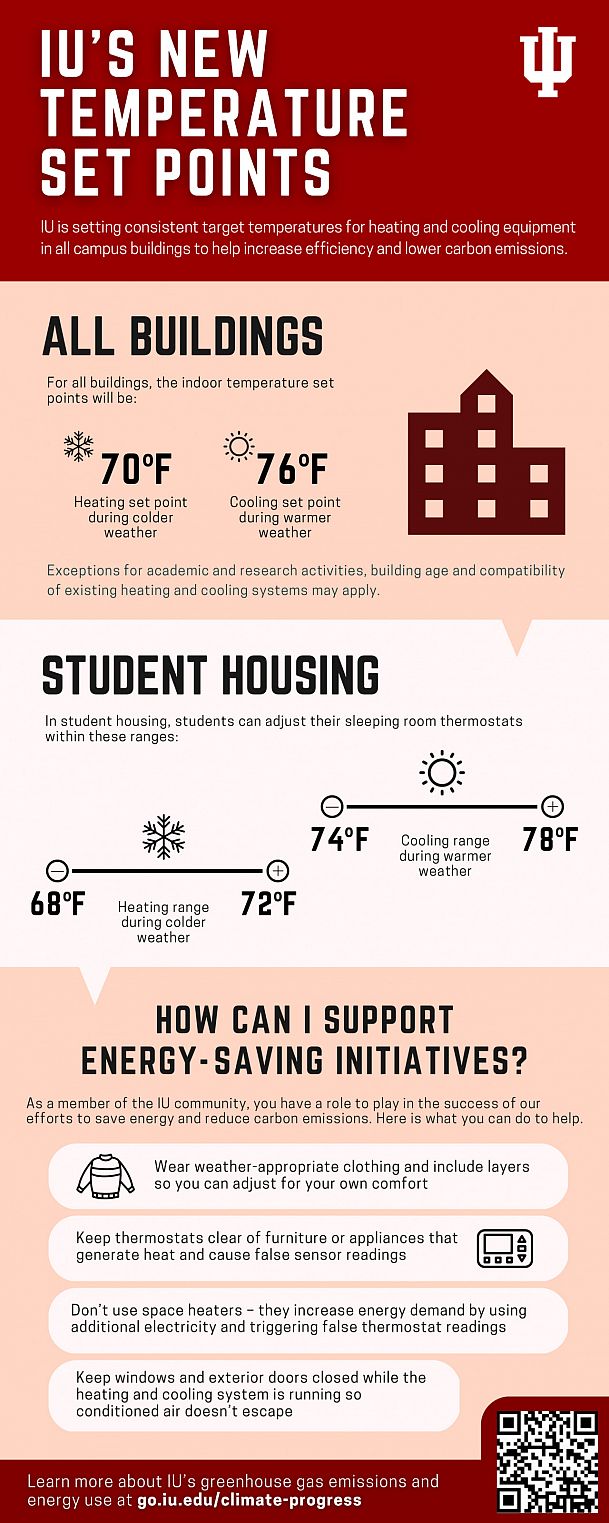Energy-saving measures expand on all campuses
By IU Today
January 20, 2023
All Indiana University campuses are expanding several energy-saving methods in an effort to reduce carbon emissions and energy costs. Some of these practices include establishing consistent building temperature set points, converting to LED lighting and electrifying grounds equipment.
“Expanding installation of energy-saving measures is an opportunity to reduce IU’s energy use and carbon footprint immediately and at low cost to the university,” said Thomas A. Morrison, vice president for capital planning and facilities.
This is not the university’s first investment in energy efficiency. IU has been implementing energy-saving methods such as LED lighting and building-level metering as part of repair and rehabilitation projects and in new construction for many years. However, at the suggestion of participants in IU Climate Action Planning Committee Open Forums hosted during fall 2022, the university is expanding these efforts for a broader and immediate impact across all campuses.
Energy-savings measures
IU is expanding support of several energy-savings methods already in use, including:
- Establishing consistent temperature set points across buildings and campuses to improve overall efficiency: All IU campuses will use consistent indoor heating and cooling temperatures in buildings, with some exceptions for academic and research activities and compatibility with individual building systems.
- Replacing traditional fixtures with LED lighting: LED lighting provides the same brightness as traditional bulbs, but it uses 90% less energy, lasts 15 times longer and produces very little heat, according to energystar.gov.
- Installing lighting motion sensors: Motion sensors increase efficiency and save energy by turning off lights in unoccupied spaces and not relying on occupants for operation.
- Installing utilities meters at individual buildings: Through IU’s energy management software, individual meters report utility use at the building level, enabling analysis of utility usage data over time. This analysis can detect anomalies that may be the result of systems needing adjustment or repair/replacement and facilitate timely response.
- Building retro-commissioning: Retro-commissioning corrects the inevitable energy drift from original design that occurs as buildings age. Common corrections include optimizing air handling and distribution, recalibrating sensors, and adjusting temperature settings. Retro-commissioning of IUPUI’s Neurosciences Research Building resulted in an electricity savings of nearly 119,000 kWh, equivalent to 10.5 residential homes’ energy use for one year.
- Electrifying grounds maintenance equipment: IUPUI’s Campus Facility Services Grounds Department has introduced fully electric grounds maintenance equipment on campus. The university will continue to test this equipment and explore opportunities to convert grounds maintenance equipment on other campuses to fully electric.
Learn more about IU’s greenhouse gas emissions and energy use at go.iu.edu/climate-progress.
